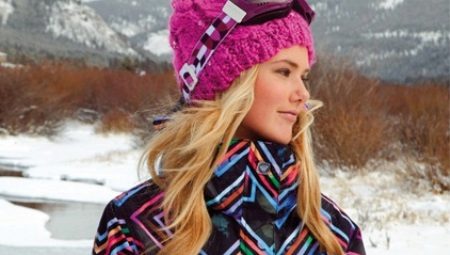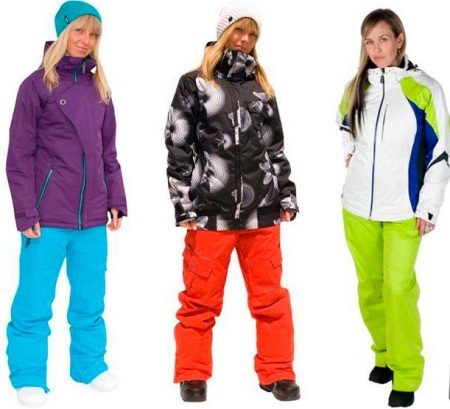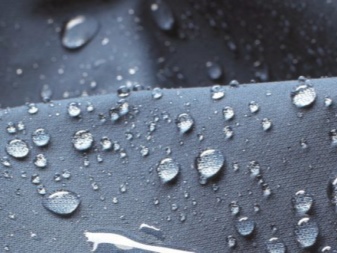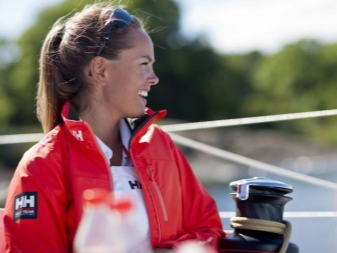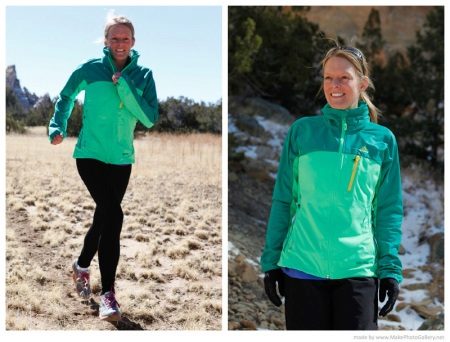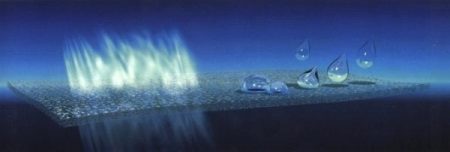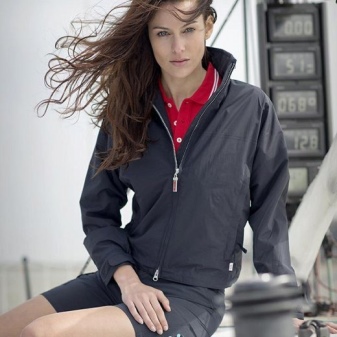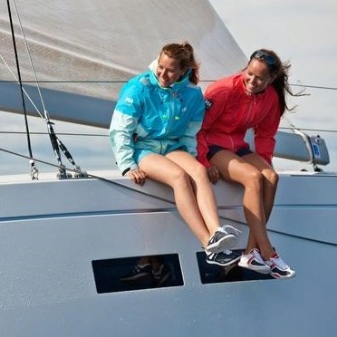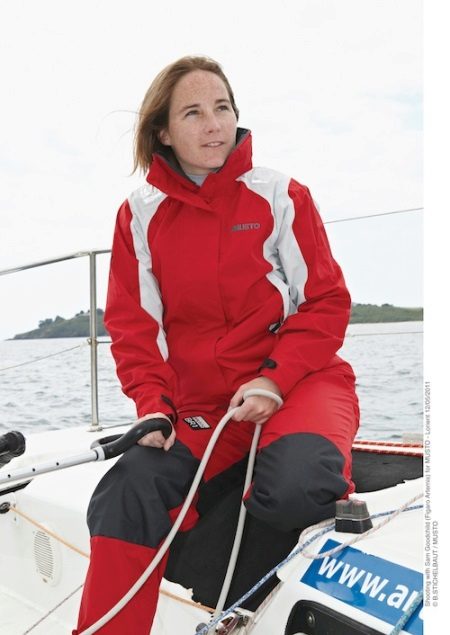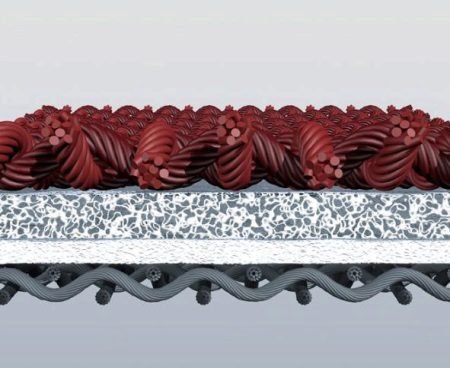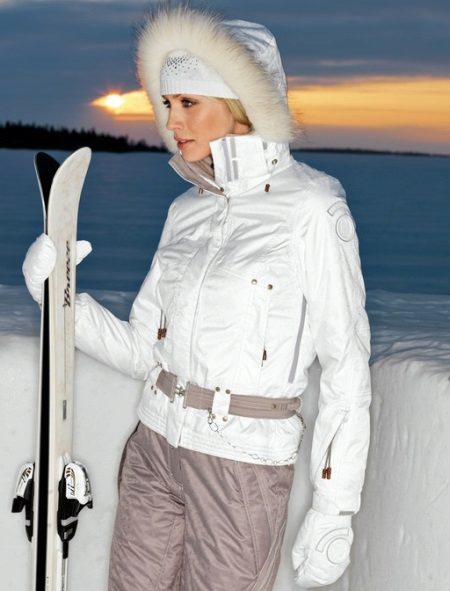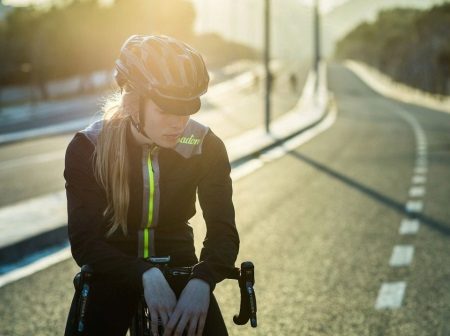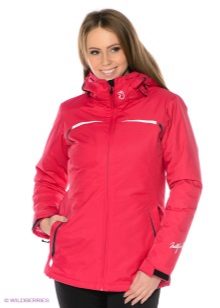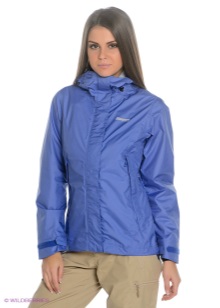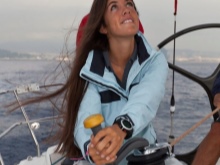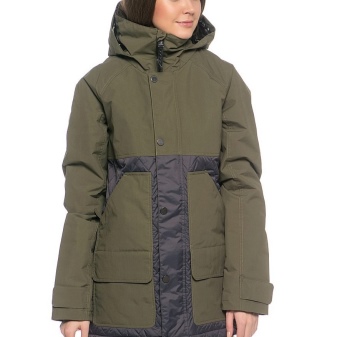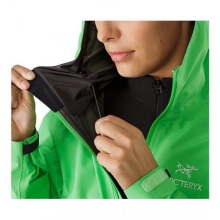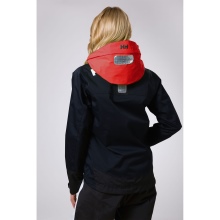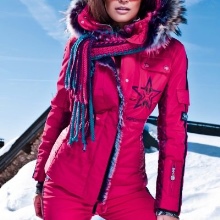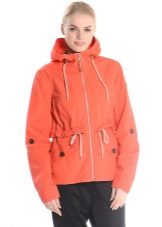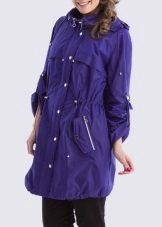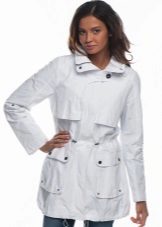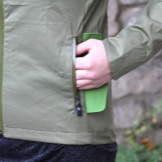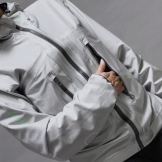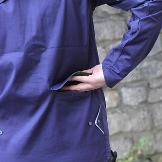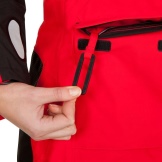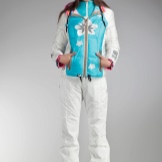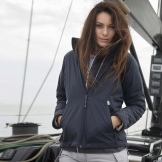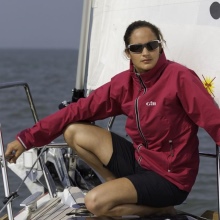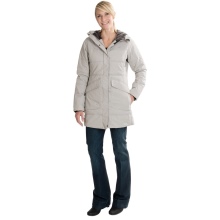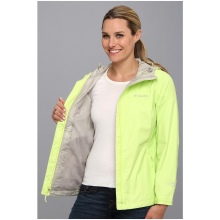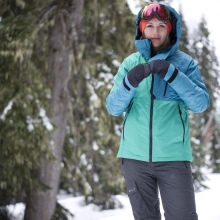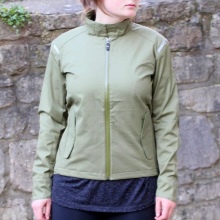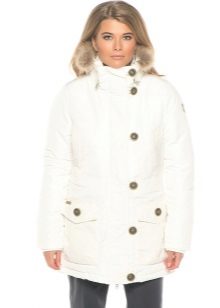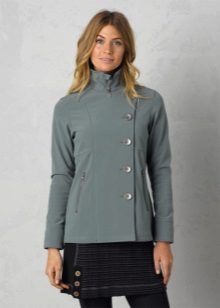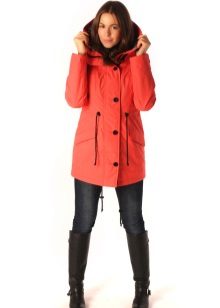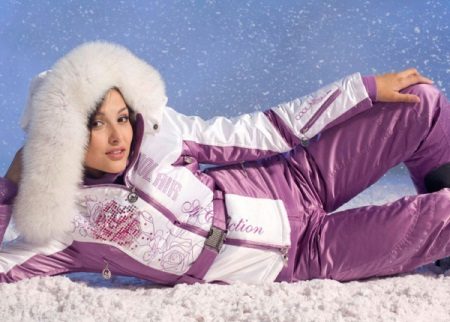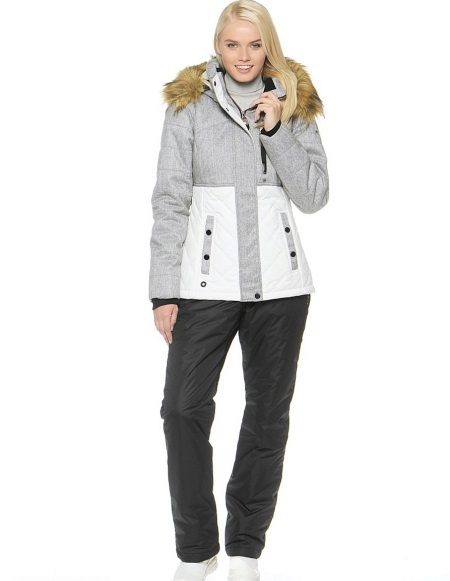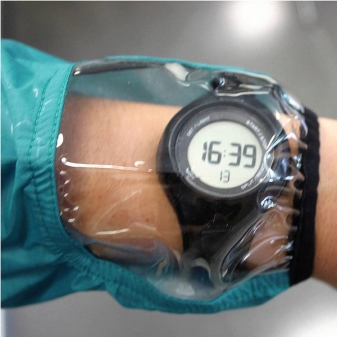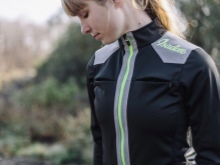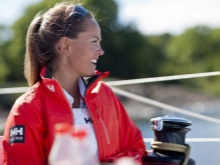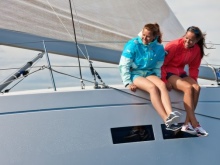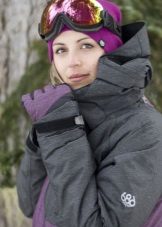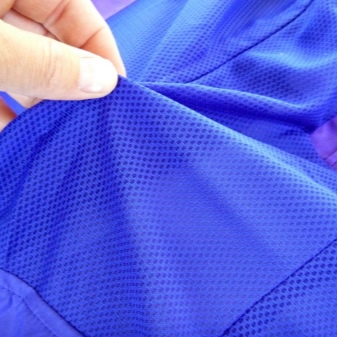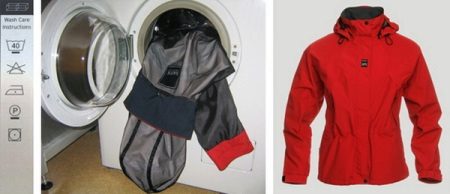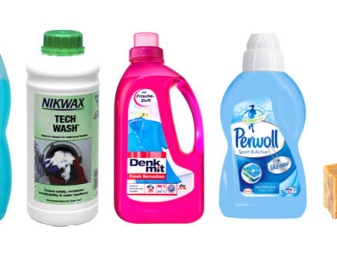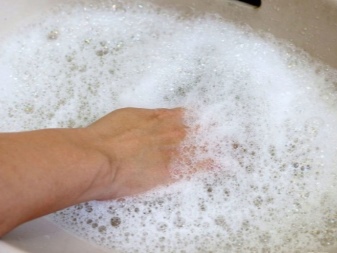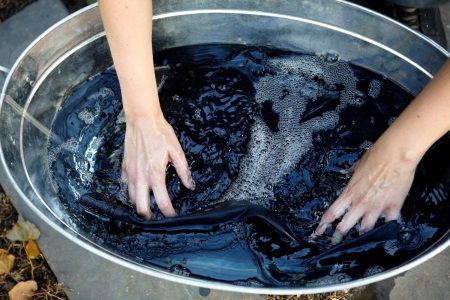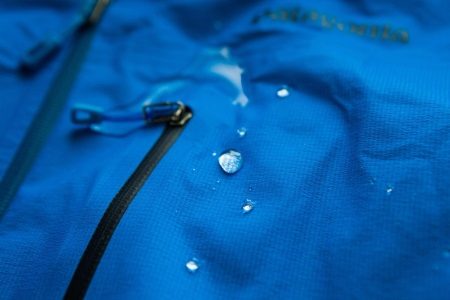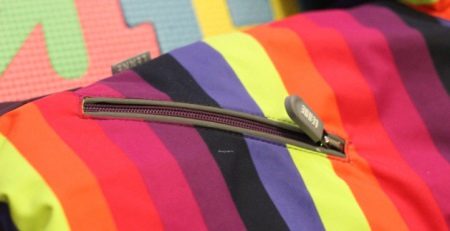One of the main aspirations of a modern person is comfortable, lightweight and practical clothing that is able to solve several problems at once: to keep warm, be breathable, water-repellent and at the same time remain stylish.
Such tasks are capable of solving membrane tissue, widely used in the manufacture of sports and tourist clothing and equipment.
A bit of history
In 1958, W.L. became one of the first companies involved in the development and production of membrane tissues. Gore, the founder of which was a chemist Bill Gore. They were looking for areas for the application of a still new chemical compound "Teflon". 10 years later, in 1969, Bill Gore's son, Bob, was able to obtain a porous film as a result of testing “Teflon” with a shock explosion.
In 1976, he patented the E-PTEE production technology for the Gore-Tex material. From that moment began the history of the production of clothing from membrane tissue.
Pros and cons of the membrane
Like any other fabric, the membrane has its pros and cons.
The advantages include the following characteristics:
- weightlessness and comfort. The clothes from a membrane are easy, allow to move freely and do not constrain movements;
- due to its unique properties, the membrane protects in windy and rainy weather;
- universal. Clothing made of membrane fabric is worn both in the cold and in the autumn cold;
- just remove any dirt;
- vapor permeability. The fabric releases the evaporation of the body well, not letting the cold air back.
Cons membrane clothing:
- special care and proper washing to avoid damage to the upper protective layer;
- for the best heat exchange, you must wear thermal underwear;
- in severe frost, the surface of the membrane tissue may freeze over, losing its unique properties. Therefore, it should not be worn at temperatures below -20 °.
Types of membranes
Modern manufacturers use 3 types of membranes in the production of finished products.
Nonpore (hydrophilic monolithic) membrane
This type of membrane removes moisture well. First, the body moisture evaporates onto the inside of the material, and then comes out due to evaporation.
Such a membrane badly evaporates a liquid in wet weather, and vice versa, it evaporates moisture perfectly - into a dry one, but it is durable.
The advantage of such a membrane is its high wear resistance. In addition, it does not require additional care.
Disadvantage - It is not the ability to "breathe" at low temperatures.
Fabric from besporovoy membrane used in the manufacture of clothing for the sport. And also for the manufacture of wetsuits.
Porous (hydrophobic microporous) membrane
In the name itself already laid the properties of the membrane. The pores that make up the fabric do not allow moisture to seep into the fabric, which makes clothing waterproof.
The main disadvantage of clothes from the pore membrane is its tendency to clog pores, because it requires special care. They erase things from the pore membrane by special means, without pressing.Otherwise, the membrane will lose its unique properties and get wet.
.
An important advantage of products from the pore membrane is their high moisture resistance.
Combined membrane view
The combination of the unique properties of the above two membranes. The inner part of the fabric is covered with a layer of pore membrane, outside - non-porous.
It was the combination of two types of films allowed to enhance the unique properties and remove the disadvantages of two types of film at once.
However, products from the combined membrane film are not cheap, because it is used for the production of premium sports equipment.
Specifications
Thanks to modern membrane production technology, it is divided into 3 types.
Double Layer Fabric (2L)
A membrane layer of various colors (white, transparent or colored) with a lining is applied on the inside of the fabric. Thanks to a lining, additional protection against damages is created. Jackets from two-layer fabric are well worn in the offseason.
The minus of products from two-layer fabric is that they are heavy and less wear-resistant. They should not be used for regions with rapid temperature changes.
Three-layer fabric (3L)
A membrane film and a mesh (inner layer) are applied onto the fabric from the inside. It turns out a kind of "sandwich" of fabric, membrane and mesh. The fabric is light and comfortable as there is no lining.
Manufacturers use this type of fabric in the production of clothing for a harsh climate.
Two-and-a-half membrane fabric (2.5L)
Manufacturers used a protective layer in the form of pimples instead of a lining. This layer is evenly applied to the membrane, because the fabric becomes light and at the same time protects against damage.
Models
Membrane jackets have already ceased to be equipment of climbers and athletes. They are entrenched in the daily lives of most fashionistas. They are warm and cozy, they are beautiful. Therefore, there is a fashion here. Manufacturers offer models with patch pockets, with a sewn or detachable hood, with fur and without fur, with a drawstring at the waist. To understand in favor of which model to make a choice, we will talk about the main models of membrane jackets.
Hooded Jackets (Removable or Sewn)
In the off-season jacket with a hood will be an excellent option. It is warm and pleasant. Hood can be sewn or removable.
The removable hood is fastened on the lock or is fixed by buttons. In some models for the autumn-spring period of membrane jackets, the adjustable hood is hidden in the collar. There are hoods with a visor that protects from sunlight.
Important! The hood should be adjustable, do not hamper the movement of the head.
The hood in the membrane jacket is not a separate part, but a continuation of the jacket, because it is made of the same material as the main product.
With or without waistband
Some models of membrane jackets are equipped with a waist at the waist, which allows to reduce the volume of the jacket, respectively, to increase heat transfer. Also, the drawstring at the waist further protects against the wind and gives the figure a beautiful look.
With pockets (stitched or overhead)
On lightning
Most of the jackets for tourist recreation and sports loads are fastened with a zipper lock. In good quality membranes, the zipper is mined to keep out moisture.
Pay attention that the zipper on the jacket does not come into contact with the zipper lock. Better when the central locking zipper on the jacket is twisted, not tractor!
Buttoned
Button-down membrane jackets are designed more for walking in urban environments.In some models, the button closure is taped.
With detachable sleeves
Another name for this model is “jacket-vest” speaks for itself. This jacket will serve you in the cold season, and in a warmer one. Such a jacket will be indispensable in a sharply continental climate, when the weather is changing rapidly. By purchasing such a model, you get a jacket and vest.
Removable sleeves can be made in the color of the main membrane fabric, and can be in a different color scheme, which gives it brightness.
With fur
The jacket, originally made for sports and recreation, quietly came into everyday wardrobe. The jacket, decorated with fur, is suitable for urban "jungle".
You will look stylish in a jacket-membrane with fur. Manufacturers decorate jackets with natural fur or artificial. Buy a jacket with or without fur - it's up to you!
In some models of membranes a thermometer is sewn for easy determination of temperature outside, and on the sleeves there are transparent cuffs
Color solutions
Membrane jacket looks good in any color. The most popular colors remain black, white, red and blue. But fashion does not stand still, and stylish membrane jackets with an ornament are increasingly appearing in order to create a more vivid image of a modern woman.
Tips for choosing
To enjoy the comfort and warmth of the jacket from the membrane, it should be carefully chosen.
We will give you some tips on their choice:
- "Breathable" properties and water resistance can be determined by numerical indicators. So, the first digit means how quickly the fabric removes moisture. 8000g / m2 and more is the highest rate, 5000g / m2 - average. The lowest is 3000g / m2.. if you are actively involved in sports, choose a jacket with an indicator from 1000g / m2
- To find out what type of fabric is used in the jacket, look at the product specifications. The density of the fabric is indicated in denier (D). The greater the density, the greater the digit in D. For example, CORE-TEX PRO 3L 50D / 90D means: Gorex three-layer fabric with a density of 50 Denier and inserts in areas subject to greater wear in 90 Denier was used for sewing the jacket.
- The seams of the product are even and must be glued so as not to let moisture through.
- It is important to pay attention to the maximum air temperature indicated on the label.
- Cuffs on the jacket prevent the ingress of snow inside, because they must be made of quality material. Prefer fleece cuffs, because as it dries quickly, your hands will not freeze. Lycra cuffs quickly get wet, dry for a long time and can freeze, which can cause discomfort in severe weather.
- Put on the hood and make sure that it does not constrain the turns of the head. Hoods are regulated by drawstrings, elastic bands on the buttons or velcro.
- Internal pockets are required!
- Internal and external zippers should not be stuck when fastening and unzipping.
- Velcro should be easily fastened and be supplemented with a diagonal line.
- Each membrane jacket should be used for its intended purpose. Follow the manufacturer's recommendations.
Membrane jacket is designed not only for sports, it can be worn in everyday life. Therefore, be careful when choosing a product and wear with pleasure.
How to wash?
To preserve the unique properties of the membrane, it is important to erase it properly. The service life of the product depends on the proper care of it.
Pay attention to a label where possible ways of washing of a jacket are specified. Typically, manufacturers indicate which type of washing (hand or machine; only hand) is appropriate for your product.
Machine washable
It is important to wash the membrane jacket with liquid detergents. On their packaging indicate whether it is suitable membrane tissue or not.
It is better to erase it in delicate mode without additional things in the drum of the machine. Friction about other things can spoil the properties of the membrane.
Press the jacket at low speed.Air conditioners for rinsing cannot be used for membrane jackets!
Handwash
For hand washing, prepare a soap solution from a liquid detergent or laundry soap. Do not rub the membrane with soap!
Water temperature should not exceed 40 °.
Rinse the jacket several times to rinse the soap out of the pores. Do not use conditioner to rinse!
To preserve the properties of the membrane, dry it on a hanger, after having straightened the folds after washing away from radiators.
It is better to impregnate the dried product with a special water-repellent agent, applying them to the surface of the product.
Ironing and cleaning chemical membrane jacket can not be!
Neglect of the simple rules of care for the membrane jacket leads to the loss of the unique properties of the fabric. Our tips will help you extend the life of the product.
